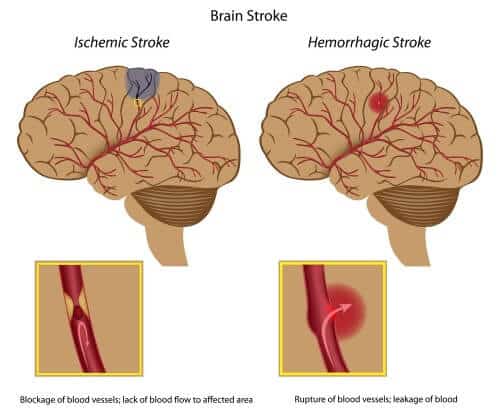Pattern-matching software, like the one used at airports to identify passengers, would allow doctors treating stroke patients to know for whom a drug to break up blockages in blood vessels would help and for whom it might cause harm
New software based on comparing image patterns may help doctors predict which patients may suffer from fatal side effects of a stroke even at stages when it is not felt.

The software, which analyzes the brain scans and examines them using a pattern recognition system similar to that used for airport security and passport control, was developed by researchers at Imperial College London. The results of the experiment based on this software were published in the journal Neuroimage Clinical.
Over 15 million people suffer from a stroke every year worldwide. Ischemic stroke is the most common type and occurs when small blood clots block the blood supply to the brain. The most effective treatment is called "intravenous thrombolysis" - during which a chemical substance is injected into the blood vessels that breaks up the blood clots, allowing the blood to flow again.
However, since the treatment constricts the blood vessels, it may cause severe side effects in six percent of the population who suffer from intracranial bleeding. This worsens their disability or may even cause death. Those who suffer from such bleeding can be identified when they have a brain scan, but the signs are so weak and the identification depends on human judgment, to such an extent that the method is considered unreliable.
In a new study, the researchers created a computer program to identify patterns in brain scans that contain signs such as atrophy of areas of the brain or small blood vessels that have become narrower due to blood leakage, in order to predict the likelihood of bleeding. They compared the judgment result of the automatic detection systems with those of radiologists. The software predicted the appearance of bleeding with an accuracy of 74% compared to 63% accuracy in the conventional diagnostic methods.
Dr. Paul Bentel from the Department of Medicine at Imperial College and the lead researcher in the article explained: "For every patient the doctor sees, he has to consider whether the benefit of the treatment will outweigh the harm from the side effects. The treatment currently accepted or currently offered carries a risk of dangerous side effects for a relatively small group of patients, so it is important that we have the best information for making decisions. Our research is a kind of pilot, but it paves the way for doctors to eventually use pattern recognition software, in addition to existing methods, to make more accurate assessments of which of their patients are at risk and treat them accordingly. We plan to conduct a much more comprehensive study to better assess its potential."
